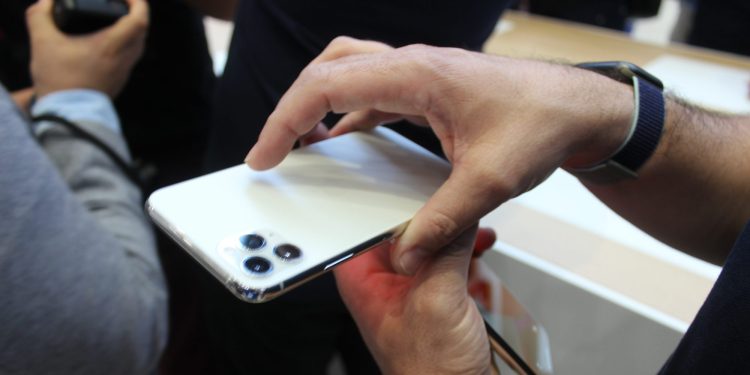Although the global smartphone market was slightly down year over year, three companies clearly dominated sales in 2019: Samsung, Apple, and Huawei. With the holiday quarter now solidly in the rearview mirror, research firm Strategy Analytics is weighing in on the phone makers’ performance, concluding from shipment estimates that while Samsung led the year, Apple dominated the holiday season, and Huawei posted second for the year and third over the holidays.
According to Strategy Analytics estimates, Samsung shipped 68.8 million smartphones in Q4 2019, ahead of Huawei’s 56.0 million but behind Apple’s 70.7 million. It’s worth underscoring that these are estimates, as Apple stopped disclosing unit sales across its product categories in 2018, but the company announced record-breaking iPhone sales for the quarter this week, providing firms with guidance that could be used to suss out its number.
The conventional wisdom regarding Apple’s businesses is that it makes up for smaller market share by guaranteeing good profits, unlike rivals that may sell more units but break even or take losses. But during the holiday quarter, Apple sold a healthy number of new iPhones without compromising its typical 38% profit margin.
Strategy Analytics executive director Neil Mawston described the growth as Apple’s best since 2015, attributing it to more aggressive pricing of the iPhone 11 — a $699 model Apple identified as its strongest-selling device every week during the quarter. While Samsung saw a 1% dip in quarterly shipments from the year-ago quarter, the firm says it performed “relatively well” at all price levels, including everything up to the Galaxy Note 10+ 5G.
June 5th: The AI Audit in NYC
Join us next week in NYC to engage with top executive leaders, delving into strategies for auditing AI models to ensure fairness, optimal performance, and ethical compliance across diverse organizations. Secure your attendance for this exclusive invite-only event.
For the entirety of 2019, Samsung shipped an estimated 295.1 million smartphones, compared with Huawei’s 240.5 million and Apple’s 197.4 million. Chinese vendors Xiaomi and Oppo rounded out the top five with 124.8 million and 115.1 million units, while all other vendors put together shipped 439.7 million, collectively totaling over 1.4 billion devices for the year. That number was down 1% from 2018, the firm says.
Perhaps not surprisingly, Huawei didn’t dominate the smartphone market in 2019, though it posted better smartphone numbers than might have been expected given the network security controversies it weathered during the year. The company’s 56 million shipments in the fourth quarter were nearly twice that of each of its smaller Chinese rivals and represented 15% of the global market versus Samsung’s 18.4% and Apple’s 18.9%.
Strategy Analytics said Huawei’s 5G smartphone sales are “strong,” but cited slowing sales in China and tougher competition in Europe as reasons for its own 1% dip in global marketshare. The company also delayed one of its most aggressively promoted new products, the foldable Mate X, missing opportunities to sell units until late in the year.
Updated at 9:25 a.m. Pacific: A separate report from IDC today drew similar conclusions from the companies’ shipments, but estimated that Apple shipped even more iPhones — 73.8 million. IDC also noted that the vendors are dealing with weak growth in China, which it attributed to pent-up demand for yet-to-be-released cheaper 5G handsets.

